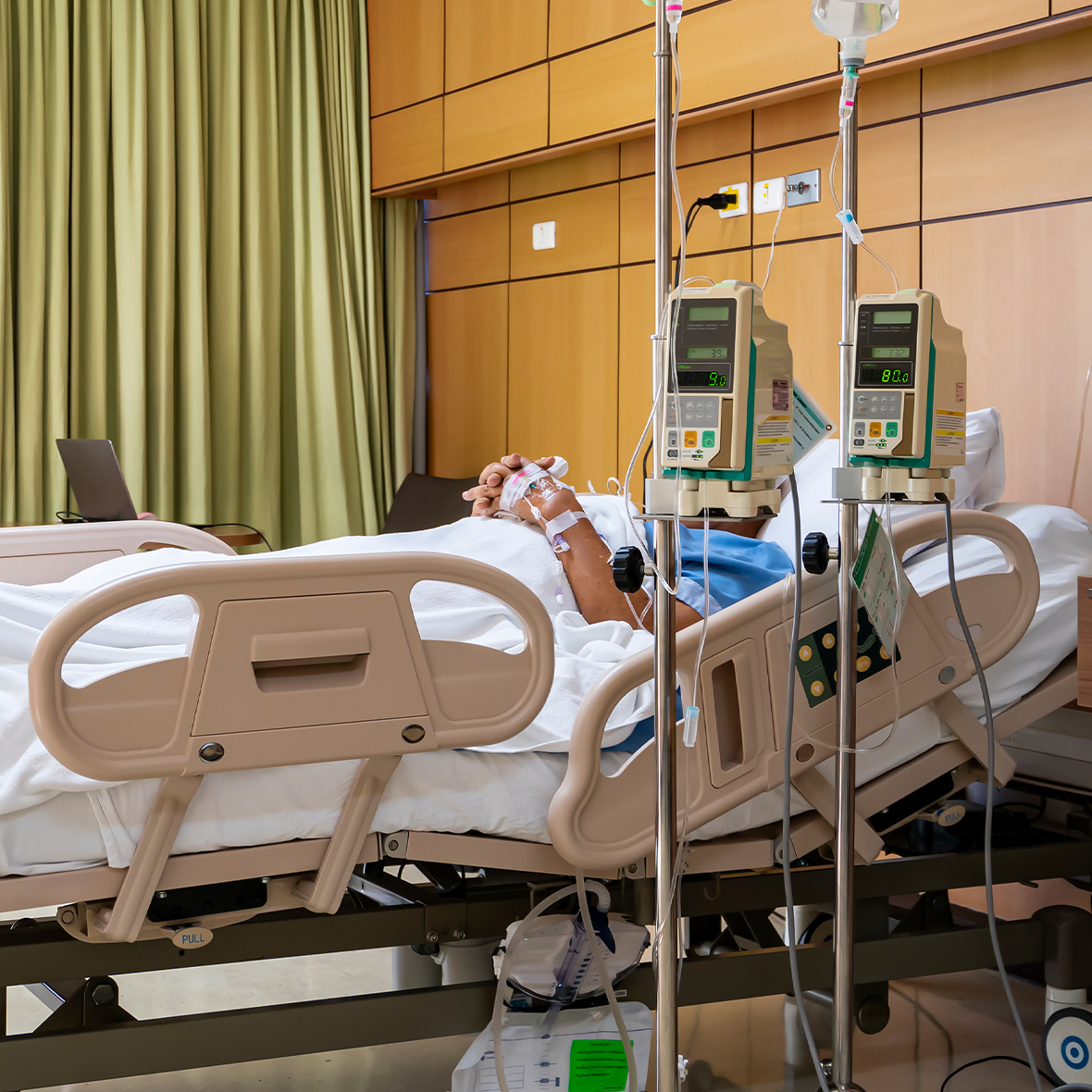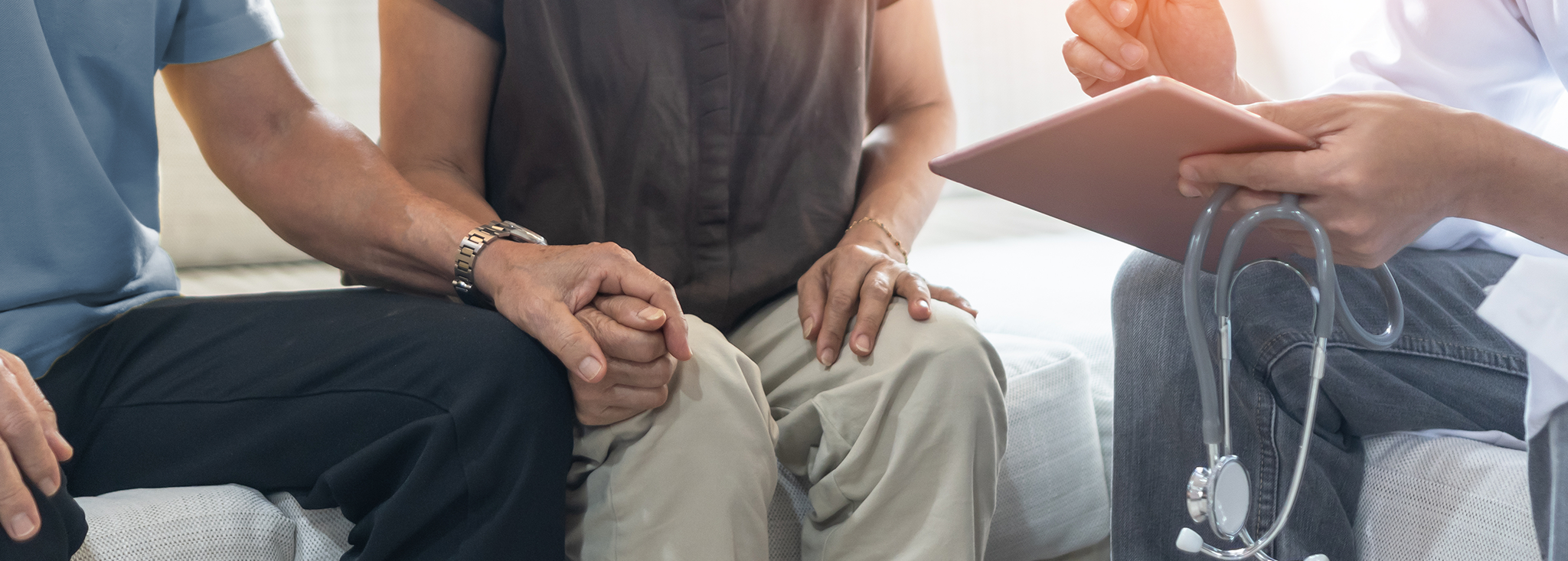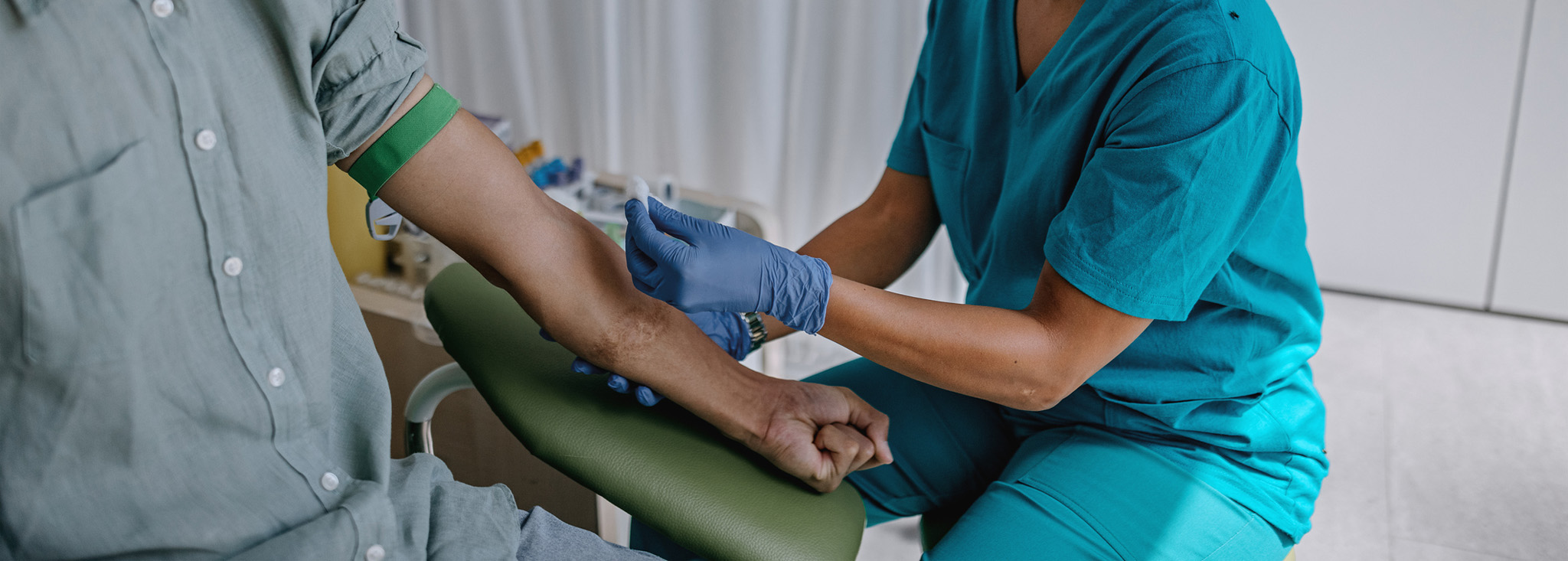Gastroparesis
Written by: Alicia McAuliffe-Fogarty, PhD, CPsychol
5 minute read
December 13, 2020
Gastroparesis is a type of autonomic neuropathy that affects the digestion of food; an estimated 5.2% of people with T1D and 1% with T2D have gastroparesis.
Gastroparesis, also known as delayed gastric emptying, is a type of autonomic neuropathy that affects the digestion of food.
- Gastroparesis is more common in people with type 1 diabetes than in those with type 2 diabetes.1
- It is estimated that about 5.2 percent of people with type 1 diabetes and 1 percent of people with type 2 diabetes have gastroparesis.1
- Gastroparesis is most commonly seen in people who have had diabetes for over 10 years and who have already developed other microvascular complications.9
The word gastroparesis actually means “stomach paralysis.”
- When a person eats, their stomach contracts to crush the food up and then push the food from their stomach into the small intestine so it can be further digested.
- In a person with gastroparesis, their stomach doesn’t contract normally so it doesn’t crush the food properly nor push the food into the small intestine the way it should for digestion.
- Specifically, the vagus nerve which signals the muscles in your stomach to contract is affected.
This can cause problems that interfere with normal digestion. It can cause2:
- Nausea
- Vomiting
- Bloating
- Stomach pain
- Weight loss
- Lack of appetite
- Acid reflux
- Vomiting undigested food that was eaten a few hours after earlier
- Feeling full after eating only a few bites
- Unpredictable blood sugars, making it difficult to figure out how much insulin to dose and when (e.g., delayed high blood glucose a few hours after eating because of the delayed digestion).
If gastroparesis is untreated it can cause2:
- Dehydration and malnutrition because the body isn’t able to absorb the nutrients from the food eaten because of vomiting or the person isn’t eating enough.
- Food to ferment and cause bacterial growth because it stays in the stomach too long or the food becomes solid (called a bezoar) and causes a blockage preventing other food to pass.
Gastroparesis Diagnosis
A diagnosis of gastroparesis is made when a person has symptoms and a test result showing delayed emptying of the stomach into the small intestine (delayed gastric emptying) without anything blockage. Having a proper diagnosis, which involves testing, is important to guide treatment options.
Your doctor will first ask you about your symptoms, medical history, do a physical exam and order blood work. They may send you for a test to confirm that it is delayed gastric emptying. It is recommended that your blood glucose is under 275mg/dl during the test to get reliable test results (if blood glucose is too high it may throw off the results). Medications that may affect the gastric emptying need to be stopped for 48-72 hours before tests are conducted—ask your doctor if you should stop taking any medications before your test.2
Scintigraphy measures how much time it takes food to move through a person’s stomach. This is considered the “gold standard” for diagnosing gastroparesis. During the test, the person has to eat an egg sandwich with jam, toast and water. The egg has a small amount of radioactive isotope in it so the doctor can see the egg moving down the digestive track for four hours. The person lies under a scanning machine that takes pictures of the egg in the stomach after one hour, two hours and four hours. If more than 10 percent of food is still in the stomach at four hours the person has gastroparesis.2
Wireless Motility Capsule (WMC) measures how quickly food is traveling through the digestive tract by measuring pH, pressure and temperature. The person swallows an electronic capsule (e.g., SmartPill). As the capsule moves through the digestive tract, it sends information to a receiver the person is wearing with the readings. This is done for five hours.2
Gastric Emptying Breath Test (GEBT) is a non-radioactive test that measures how fast your stomach empties by measuring carbon dioxide in breath samples after a meal that has a chemical element called the 13C isotope (carbon-13) added to it.2
Treatment
One of the main goals of any treatment is to make sure the person is getting enough calories per day, is hydrated and has the nutrients they need to be healthy. Some diabetes medicines delay gastric emptying like amylin analogs and GLP-1 agonists, whereas others do not. Please ask your doctor about your medication(s) if you are diagnosed with gastroparesis.2
In mild gastroparesis, keeping good nutrition and hydration from food is the goal. But, in more severe cases, if changing diet and medications don’t work, people may need a feeding tube or IV nutrition.2
Diet recommendations include:
- Eating small, low-fat, low fiber meals four to five times a day
- Getting calories via liquids (drinking) is also recommended because it seems that liquids may empty normally into the small intestine
- Avoiding carbonated drinks, spicy foods, alcohol and smoking
- Keeping blood glucose as close to target range as possible because high blood glucose delays gastric emptying
Gastroparesis adds an additional challenge to managing blood glucose because food absorption is not reliable. For example, a person may take insulin for a meal but then get low right after because there was a delay in food absorption. Often people have to bolus after meals. Karey Stapinksi, age 44, who has had type 1 diabetes for 40 years explains, “I live using my combo bolus [extended bolus/square wave bolus] feature on my pump. If I don’t, I am battling crashing after meals and then chasing highs a few hours later.”
There are some medication options if changing diet isn’t managing the symptoms of gastroparesis called prokinetics. An antibiotic called erythromycin may also be helpful. Doctors may also prescribe anti-emetics as needed to stop vomiting and nausea. There are other medications currently being studied that will help to treat gastroparesis. If medication treatment doesn’t work, surgical options are available.2
Psychosocial aspects of gastroparesis
Diabetes is exhausting and now adding more factors of gastroparesis to complicate management (not to mention the physical symptoms) is overwhelming. Stapinski adds, “Gastroparesis just sucks—it adds extra layers to an already complicated decision-making process.”
There has been research illustrating that people with gastroparesis have a lower quality of life. They have difficulty keeping up with the demands of life (often because of symptoms of vomiting, pain, etc.).5,6 People who have more severe symptoms of gastroparesis also have more symptoms of anxiety.7 Using an insulin pump and continuous glucose monitor (CGM) seems to help people with their diabetes management and improves their quality of life.8
Talking to your diabetes health care team about practical tips for managing gastroparesis and how to adjust your insulin doses is important. It is equally important to talk to them about how you are feeling. Talking to a mental health care provider knowledgeable about diabetes can help you cope with your new normal of diabetes and gastroparesis.
1. Choung RS, Locke GR III, Schleck CD et al. Risk of gastroparesis in subjects with type 1 and 2 diabetes in the general population. Am J Gastroenterol 2012;107:82–88.
2. Camilleri, Michael MD1; Parkman, Henry P MD2; Shafi, Mehnaz A MD3; Abell, Thomas L MD4; Gerson, Lauren MD, MSc5 Clinical Guideline: Management of Gastroparesis, American Journal of Gastroenterology: January 2013 – Volume 108 – Issue 1 – p 18-37
3. Maleki D, Locke III GR, Camilleri M et al. Gastrointestinal tract symptoms among persons with diabetes mellitus in the community. Arch Intern Med 2000;160:2808–2816.
4. Parkman HP, Yates K, Hasler WL et al. Similarities and differences between diabetic and idiopathic gastroparesis. Clin Gastroenterol Hepatol 2011;9:1056–1064.
5. Talley NJ, Young L, Bytzer P et al. Impact of chronic gastrointestinal symptoms in diabetes mellitus on health-related quality of life. Am J Gastroenterol 2001;96:71–76.
6. Punkkinen J, Färkkil M, Mätzke S et al. Upper abdominal symptoms in patients with Type 1 diabetes: unrelated to impairment in gastric emptying caused by autonomic neuropathy. Diabet Med 2008;25:570–577.
7. Hasler WL, Parkman HP, Wilson LA et al. Psychological dysfunction is associated with symptom severity but not disease etiology or degree of gastric retention in patients with gastroparesis. Am J Gastroenterol 2010;105:2357–2367.
8. Calles-Escandón J, Koch KL, Hasler WL, et al. Glucose sensor-augmented continuous subcutaneous insulin infusion in patients with diabetic gastroparesis: An open-label pilot prospective study. Plos one. 2018 ;13(4):e0194759. DOI: 10.1371/journal.pone.0194759.
9. Aljarallah BM. Management of diabetic gastroparesis. Saudi J Gastroenterol 2011;17:97–104
Educational content related to diabetes complications is made possible with support from Allergan, an active partner of Beyond Type 1 at the time of publication. Editorial control rests solely on Beyond Type 1.

Author
Alicia McAuliffe-Fogarty, PhD, CPsychol
Beyond Type 1 is the largest diabetes org online, funding advocacy, education and cure research. Find industry news, inspirational stories and practical help. Join the 1M+ strong community and discover what it means to #LiveBeyond a diabetes diagnosis.




